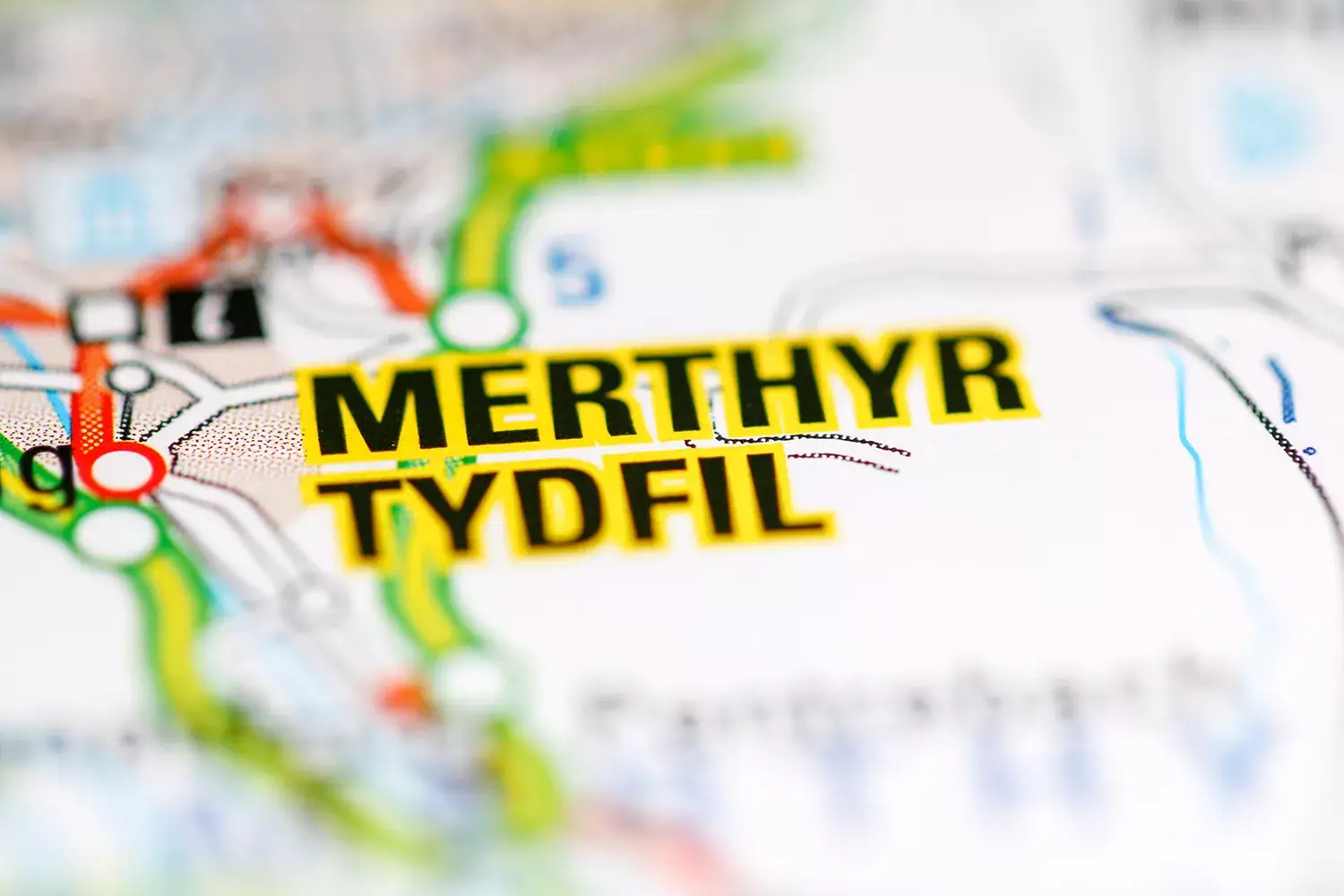
Situated between the magnificent Brecon Beacons National Park and the metropolitan capital city of Cardiff, Merthyr Tydfill is the primary town in Merthyr Tydfill County Borough. It is notable for its unusual name, the history of which is almost as fascinating as that of the town itself. So, what does Merthry Tydfill actually mean?
A linguistic exploration
As its spelling and location suggest, the name ‘Merthyr Tydfil’ Is Welsh in origin. The word ‘Merthyr’ roughly translates to ‘martyr’ in English but also refers to where a martyr was slain. In this case, the martyr in question is Saint Tydfil, martyred in around 480 AD. Legend has it that Saint Tydfil was the 23rd daughter of legendary King Brychan Brycheiniog. All of his rumoured 25 daughters and 24 sons lived deeply pious lives, and Tydfil set up a monastic community, becoming renowned for her kindness and benevolence. Tydfil is reported to have been killed by pagans in around 480AD as she knelt praying. She was buried in the town she had made her home. So, in essence, ‘Merthyr Tydfil’ means ‘the martyrdom of Saint Tydfil’.
Over time, anglicised versions of the name have emerged, including ‘Merthyr Tudfil’ and ‘Merthyr Tidvil’, and the town today is commonly referred to as ‘Merthyr’. However, the town’s full Welsh name continues to be used officially and is a cherished part of the town’s identity.
History of Merthyr Tydfil
Located in the South Wales valleys, Merthyr Tydfil was at the epicentre of Wales’ industrial boom during the 18th and 19th centuries. The region’s rich natural resources of coal, limestone and iron ore were central to iron production, the key material of the Industrial Revolution.
The extensive Global demand for the resources transformed most South Wales towns, including Merthyr Tydfil, from agricultural settlements into thriving centres of industry. Merthyr Tydfil became the iron capital of the world, its name synonymous with the iron and coal industries. Workers from all over Wales flocked to the town in search of work and a better life, and for much of the 19th century, Merthyr Tydfil was the largest urban area in the country.
Merthyr Tydfil today
Like many South Wales towns, Merthyr Tydfil faced significant economic challenges in the post-industrial era. The decline of the iron and steel industries had a devastating effect, and the town faced rising unemployment and poverty. For a time, the once affluent and Global powerhouse Merthyr Tydfil became known as one of the poorest towns in Wales.
However, the fiercely proud locals fought back, and the perception of the area is beginning to change. In recent years, concerted efforts have been made to revitalise the town, focusing on tourism, culture and community development. Scores of new bars and restaurants have sprung up, and the once dilapidated town is once again alive.
Transformation projects are afoot to improve its landscapes, and the town’s various attractions, which include the Brecon Mountain Railway, a renowned mountain biking centre and Cyfarthfa Park & Castle, delight the tourists who now visit from around the UK.
Summary
The name ‘Merthyr Tydfil’ carries profound historical and cultural significance, at once celebrating the legacy of a cherished Welsh Saint, telling the story of a town that rose to prominence during the Industrial Revolution and depicting its struggles as the industries it relied so heavily on died. Merthyr Tydfil’s storied past and bright future are testaments to its people, past and present, whose resilience and determination have been instrumental in weaving the tapestry of the town.




















